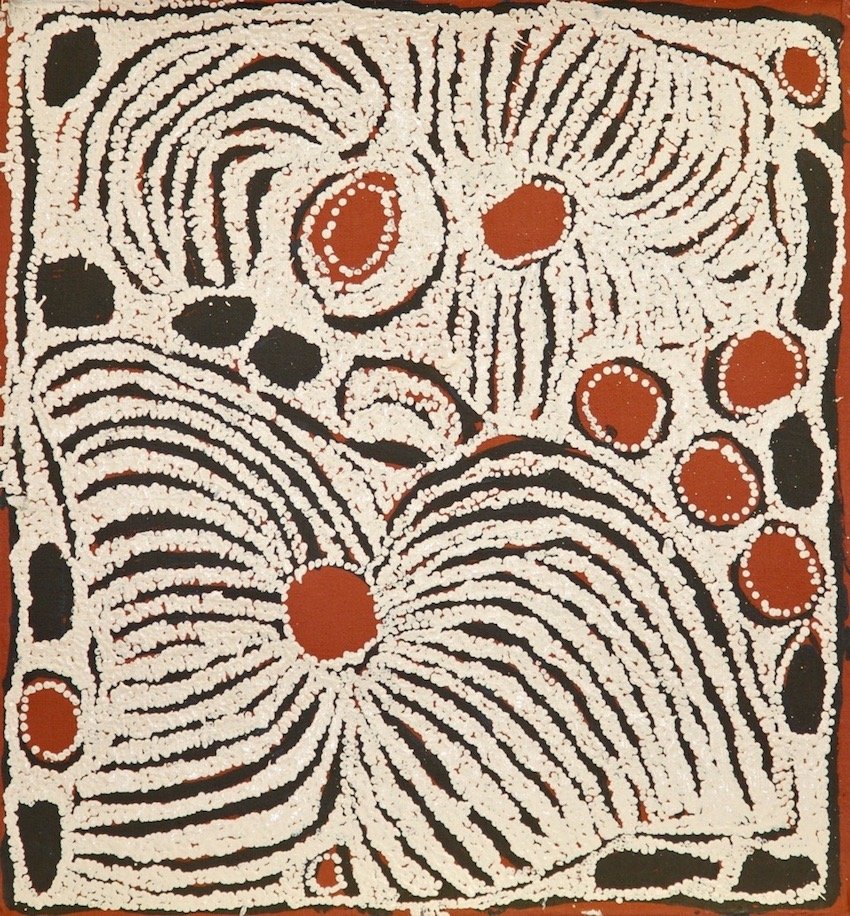Ningura Napurrula
Women's Ceremonies at Ngaminya, 2006,
Acrylic on linen, 91cm x 120cm
Provenance: Commissioned by Papunya Tula Artists, Alice Springs. Private collection, Queensland. Deutscher and Hackett, Sydney.
Untitled, 2011
Acrylic on canvas, 61cm x 55cm
Provenance: Paul Johnstone Gallery, Winnellie.
Untitled, 2012
Acrylic on canvas, 61cm x 55cm
Provenance: Paul Johnstone Gallery, Winnellie.
Ningura Napurrula spent her youth on the traditional lands within the Gibson Desert. In the mid-1960s, she left the land along with her husband, acclaimed artist Yala Yala Gibbs Tjungurrayi and settled in Papunya, where they assisted in the founding of the Papunya Tula Artists. Napurrula’s first artistic practice was assisting her husband with the backgrounds of his canvases - painting the precise dots that characterised the classic Tingari style. It wasn’t until 1995, that Napurrula joined the Haasts Bluff/Kintore women’s painting project, that Napurrula began painting her own works (1).
From the authenticity certificate: The roundal in this painting depicts the rock hole site of Ngaminya, slightly south of the Kiwirrkura community in WA. A group of ancestral women of the Napaltjarri and Napurrla kinship subsections camped at this site after travelling from further west. From Ngaminya, the women continued east to Wirrulnga, another rock hole site in a small rocky outcrop east of Kiwirrkura. At Wirrulnga, the women spun hair-string with which to make nyimparra (hair-string skirts), which are worn during ceremonies. The comb-like shapes in this painting depict the nyimparra. While in the area around Ngaminya and Wirrulnga the women also gathered the bush food, known as kampurarrpa or desert raisin from the plant Solanum centrale, before continuing their travels north east of Wilkinkarra (Lake Mackay).

